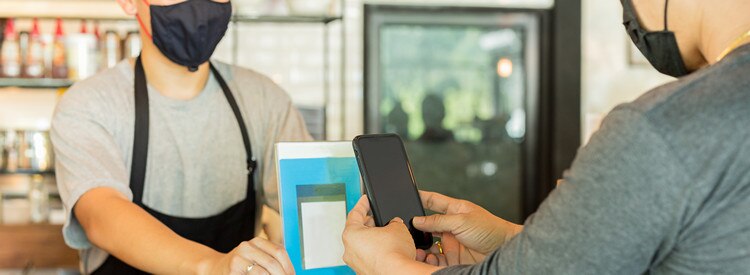Article
Survey Says (Take Two!): Three New Consumer Shopping Trends as Retailers Begin to Reopen

Kim Melvin, senior director, Global Retail Marketing at Sensormatic Solutions, shares her insights on key trends and findings from the latest consumer shopping behavior survey.
Retailers are finally beginning to reopen after COVID-19 forced them to close their doors for nearly three months. As restrictions ease and in-store shopping returns, many are asking themselves: How will consumer behavior be impacted by the pandemic and what steps can retailers take to ensure a safe and comfortable in-store experience?
To help answer this question, we redistributed our April survey to another group of 1,000+ U.S. consumers, 18-years and older, during June 3-4, 2020, to see if there were any notable shifts in shopping habits. Here are three interesting and relevant trends that we uncovered.
Home improvement, apparel and health & beauty categories gained traction
Our June survey found that 34% of respondents have shopped in-store for home improvement and/or gardening, an increase of 40% compared to our survey results from April. Additionally, 19% of respondents have shopped in-store for apparel in the last month (a 65% month-over-month increase from April) and 33% of respondents have shopped in-store for health & beauty in the last month (an 11% increase from April).
As consumers return to stores, they’re finding the “try before you buy” experience is noticeably different as retailers take extra precautions to create a safe environment. Retailers like Gap and Nordstrom are quarantining returned or tried-on items for 24-72 hours before putting them back on the sales floor. Some retailers are also temporarily closing their fitting rooms altogether.
While consumers aren’t necessarily phased – according to our survey, nearly half (45%) are very likely or somewhat likely to make a clothing purchase even if they can’t physically try it on – this is creating inventory visibility complexities for retailers. If a retailer doesn’t know how much inventory they have on hand to sell, they could run into issues during the omnichannel fulfillment process.
For example, if a consumer placed a buy online, pickup in-store (BOPIS) order and arrived at the store to find that their item was not actually sellable, this creates a frustrating experience. Inventory intelligence solutions – powered by RFID – can provide retailers with an accurate view of their available inventory, enabling them to execute seamless customer experiences.
Consumers prioritize a speedy (and safe) checkout
The majority of respondents who used self-checkout (51%) found the speed at which they were able to get in and out of the store most important, followed by the steps retailers were taking for cleanliness of the area (27%), and the steps taken to promote social distancing and occupancy within the store (20%). Notably, there was an 18% increase in those who said the speed factor was most important in June compared to April.
Additionally, when asked what actions would make them feel the most comfortable with returning to stores, consumers continue to rank “controlling the number of people in stores to promote social distancing” as most important (33%). This ranked slightly above “adding more fulfillment options” (25%) and was nearly identical sentiments found in April’s survey.
As consumers increasingly prioritize speedy self-checkout experiences and continue to prioritize in-store social distancing, real-time occupancy solutions can help. Not only do they assist retailers with understanding shopper density within a store, but also can provide up-to-the-minute understanding of staffing needs for efficient checkout experiences, whether that’s at the self-checkout kiosk or curbside.
Experiential retail is taking a back seat
Not surprisingly, in-store experiences were less important in June (11%) compared to April (13%) – a 15% decrease month-over-month – as consumers are becoming more intentional with their shopping visits. This trend was magnified by our June respondents who overwhelming preferred to shop at free standing stores (53%), compared to open-air shopping centers (20%) and malls (14%).
Malls and open-air shopping centers have many “experiential” components like movie theatres and restaurants. Many of these amenities either haven’t reopened yet or aren’t being prioritized by consumers currently.
As retailers continue to evaluate when to reopen, and especially if they fall into one or all of these categories, it can be helpful to look at consumer mobility insights to determine the right time and place. This opt-in, location-based data provides retailers with insights on when and where retail will recover by looking at consumer mobility patterns and people’s comfort with public spaces.
Inventory visibility and consumer mobility insights will set retailers apart
As we found from our first survey, creating a store environment where consumers feel safe will be paramount for drawing people back into the store. And while social distancing measures continue to be important, those retailers that also have strong visibility into their inventory and are tuned into consumer mobility patterns will arguably be in the best position to capitalize on the retail industry’s current reality.
Contact us for more information on how Sensormatic Solutions can help you with your COVID-19 retail needs.
Explore Related Topics

Ready to see how Sensormatic Solutions can transform your bottom line?
Contact Us


